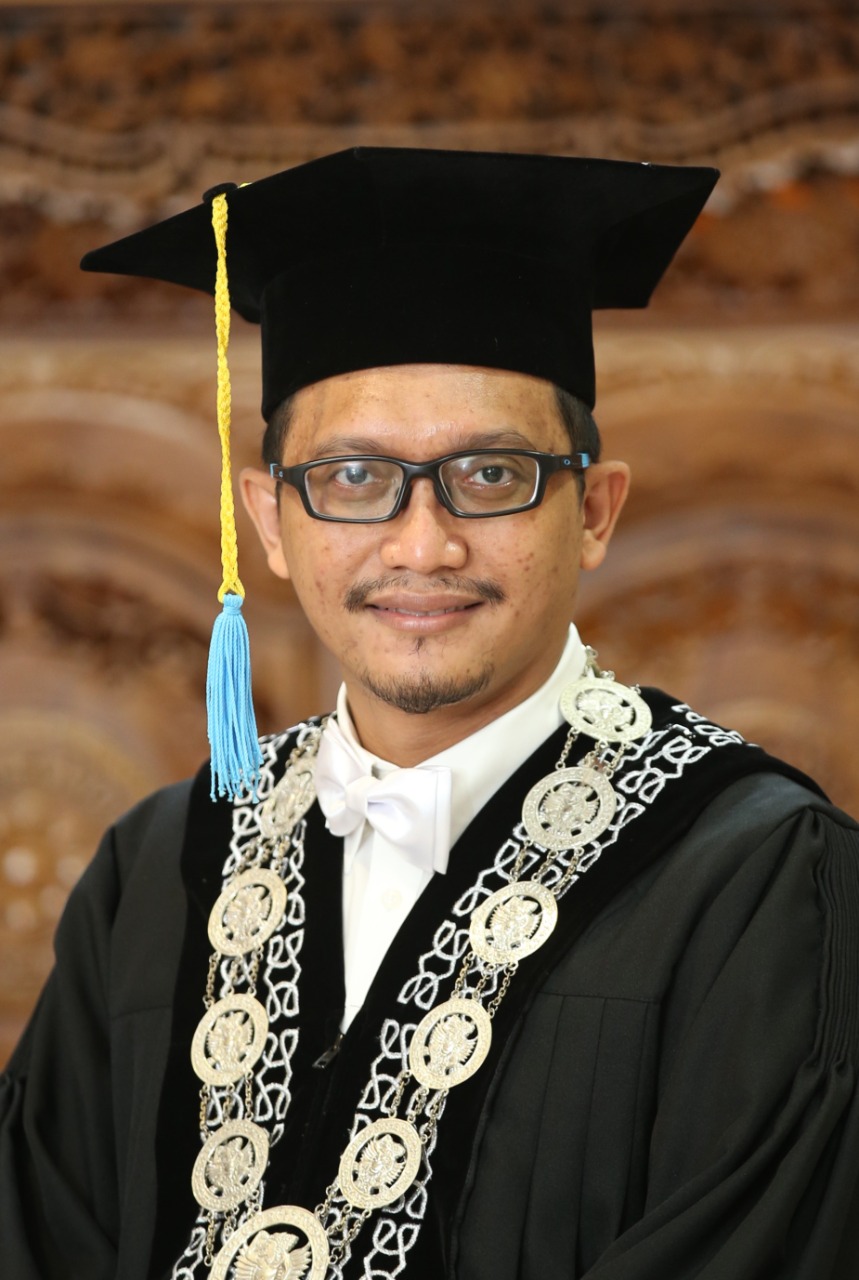Decubitus Ulcer Patients Profile in Department of Plastic Surgery Dr. Soetomo General Hospital Surabaya from January to December 2018

Downloads
Highlights:
1. Decubitus ulcers can be caused by prolonged immobilization and constant pressure on the body.
2. Decubitus ulcer patients were dominated by females, aged 46-65 years old, and the most common comorbidity history was patients with limb weakness.
Abstract
Introduction: Continuous pressure on the area of the skin, especially in areas with bone protrusion can cause decubitus ulcers. Decubitus ulcers can occur to anyone, both children and adults, male or female, especially in people who experience daily immobility in a bed or wheelchair. Many treatments are performed in order to prevent decubitus ulcers to not becoming a more dangerous condition. This study aimed to determine the profile of pressure ulcers in Dr. Soetomo General Hospital Surabaya.
Methods: This was a cross-sectional descriptive retrospective study. Secondary data were collected from 25 medical records of pressure ulcer patients in the Outpatient Clinic Department of Plastic Surgery Dr. Soetomo General Hospital Surabaya from January to December 2018. The data such as age, gender, risk factors, comorbidities history, and management were taken. The calculation was performed using Microsoft Excel.
Results: The majority of patients with pressure sores at the Outpatient Clinic Department of Plastic Surgery Dr. Soetomo General Hospital Surabaya from January to December 2018 were dominated by female patients aged 46-65 years old (24%), with the most common risk factor being immobilization (96%). Patients' history showed that most patients with decubitus ulcers suffered from a weakness in the limbs (13%). The most common treatment was wound bed preparation (46%) and education (46%).
Conclusion: Pressure ulcers most often occurred in women aged 41-65 years or the elderly. Most patients experienced immobilization as a risk factor for pressure ulcers. These patients were dominated by those who had a history of illness with limb weakness. The therapy applied to patients with pressure sores was the preparation of wound beds and education to the patient.
Bhattacharya S, Mishra RK. Pressure Ulcers: Current Understanding and Newer Modalities of Treatment. Indian J Plast Surg 2015; 48: 004–016.
Lozano R, Naghavi M, Foreman K, et al. Global and Regional Mortality from 235 Causes of Death for 20 Age Groups in 1990 and 2010: a Systematic Analysis for the Global Burden of Disease Study 2010. Lancet 2012; 380: 2095–2128.
Rosita T, Maria R. Mobilisasi dan Timbulnya Luka Tekan pada Pasien Tirah Baring. FIK UI. 2014.
National Pressure Injury Advisory Panel. Pressure Injury Stages. NPIAP, https:// npiap.com/ page/PressureInjuryStages (2016).
Agrawal K, Chauhan N. Pressure Ulcers: Back to the Basics. Indian J Plast Surg 2012; 45: 244–254.
Wintoko R, Yadika ADN. Manajemen Terkini Perawatan Luka. JK Unila; 4.
L M, Pamungkas K, Anggraini D. Profil Penderita Ulkus Dekubitus yang Menjalani Tirah Baring di Ruang Rawat Inap RSUD Aarifin Achmad Provinsi Riau Periode Januari 2011 – Desember 2013. J Online Mahaiswa 2015; 2: 1–11.
Nur MH. Gambaran Ulkus Dekubitus pada Bayi dan Anak di Rumah Sakit Umum Pusat Haji Adam Malik Medan Tahun 2013-2016. Universitas Sumetera Utara, https:// repositori.usu.ac.id/ handle/ 123456789/4777 (2017).
Jaul E, Barron J, Rosenzweig JP, et al. An Overview of Co-Morbidities and The Development of Pressure Ulcers among Older Adults. BMC Geriatr 2018; 18: 305.
Syafira I, Suroyo RB, Utami TN. Analisis Faktor yang Mempengaruhi Osteoporosis pada Ibu Menopause di Puskesmas Stabat Kabupaten Langkat. JUMANTIK (Jurnal Ilm Penelit Kesehatan) 2020; 5: 65.
Touyz L, Touyz S. Osteoporosis as it Affects Men, Andropausal and Senior Males. SMJ Orthop 2017; 3: 1048.
Hasanah N. Gambaran Perubahan Posisi Berbaring terhadap Kejadian Ulkus Dekubitus pada Pasien Imobilitas di Ruang Rawat Inap RSUP Dr. Pirngadi Medan. Universitas Sumatera Utara, https://repositori.usu.ac.id/handle/123456789/9854 (2018).
Kohali NC, Nautiyal HK, Dvivedi S, et al. Pressure Ulcers: Victims Of ImmobilizationPressure Ulcers: Victims Of Immobilization. Internet J Surg; 28. Epub ahead of print 2012. DOI: 10.5580/2b0f.
Pratama EL, Martini RD, Pertiwi D. Gambaran Multipatologi Pasien Geriatri di Poliklinik Khusus Geriatri RSUP Dr. M. Djamil Padang Periode Januari – Desember 2014. J Kesehat Andalas 2018; 6: 536.
Sulidah, Susilowati. Pengaruh Tindakan Pencegahan Terhadap Kejadian Dekubitus pada Lansia Imobilisasi. MEDISAINS J Ilm Ilmu-Ilmu Kesehat 2017; 15: 161–72.
O O, Sitorus RE, Tsuawabeh D. Risiko Terjadinya Dekubitus Berdasarkan Tingkat Ketergantungan Pasien di Ruang Perawatan Neurologi. J Keperawatan Padjadjaran; 1. Epub ahead of print 10 April 2015. DOI: 10.24198/jkp.v1i3.66.
Sunaryati B. Perbedaan Pengaruh Antara Pemberian Minyak Kelapa dengan Pendidikan Kesehatan tentang Reposisi Terhadap Pencegahan Dekubitus. Universitas Sebelas Maret, https://digilib.uns.ac.id/dokumen/detail/31270/Perbedaan-pengaruh-antara-pemberian-minyak-kelapa-dan-penyuluhan-kesehatan-tentang-reposisi-terhadap-pencegahan-dekubitus (2013).
Halim AS, Khoo TL, Mat Saad AZ. Wound Bed Preparation from a Clinical Perspective. Indian J Plast Surg 2012; 45: 193–202.
Elfiah U. Konsep Perawatan Luka Terkini di Bedah Plastik. Universitas Jember, https:// ura.unej.ac.id/ handle/123456789/68343 (2018).
Moore Z, Etten M van. Ten Top Tips: Repositioning a Patient to Prevent Pressure Ulcers Clinical Practice. Wound Intrenatinal 2014; 5: 6–9.
Garg P, Patel R, Taraporvala F, et al. The Efficacy of Air Mattress in Bedsore Prevention and Treatment. Sch J Appl Med Sci 2015; 3: 1602–1604.
Mahmuda INN. Pencegahan dan Tatalaksana Dekubitus pada Geriatri. Biomedika 2019; 11: 11.
Copyright (c) 2022 Azmil Permatasari, Magda Rosalina Hutagalung, Nuniek Nugraheni Sulistiawaty, Agus Susanto

This work is licensed under a Creative Commons Attribution-ShareAlike 4.0 International License.
1. The journal allows the author to hold the copyright of the article without restrictions.
2. The journal allows the author(s) to retain publishing rights without restrictions
3. The formal legal aspect of journal publication accessibility refers to Creative Commons Atribution-Share Alike 4.0 (CC BY-SA).




























